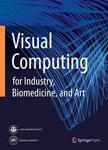Multidisciplinary Design and Optimization of Satellite Launch Vehicle Using Latin Hypercube Design of Experiments
Multidisciplinary Design and Optimization of Satellite Launch Vehicle Using Latin Hypercube Design of Experiments作者机构:School of Astronautics Beijing University of Aeronautics and Astronautics
出 版 物:《Computer Aided Drafting,Design and Manufacturing》 (计算机辅助绘图设计与制造(英文版))
年 卷 期:2009年第19卷第1期
页 面:1-7页
学科分类:08[工学] 0825[工学-航空宇航科学与技术]
主 题:multidisciplinary design and optimization satellite launch vehicle solid propulsion liquid propulsion latin hypercube sampling design of experiments
摘 要:The design of new Satellite Launch Vehicle (SLV) is of interest, especially when a combination of Solid and Liquid Propulsion is included. Proposed is a conceptual design and optimization technique for multistage Low Earth Orbit (LEO) bound SLV comprising of solid and liquid stages with the use of Genetic Algorithm (GA) as global optimizer. Convergence of GA is improved by introducing initial population based on the Design of Experiments (DOE) Technique. Latin Hypercube Sampling (LHS)-DOE is used for its good space filling properties. LHS is a stratified random procedure that provides an efficient way of sampling variables from their multivariate distributions. In SLV design minimum Gross Lift offWeight (GLOW) concept is traditionally being sought. Since the development costs tend to vary as a function of GLOW, this minimum GLOW is considered as a minimum development cost concept. The design approach is meaningful to initial design sizing purpose for its computational efficiency gives a quick insight into the vehicle performance prior to detailed design.



